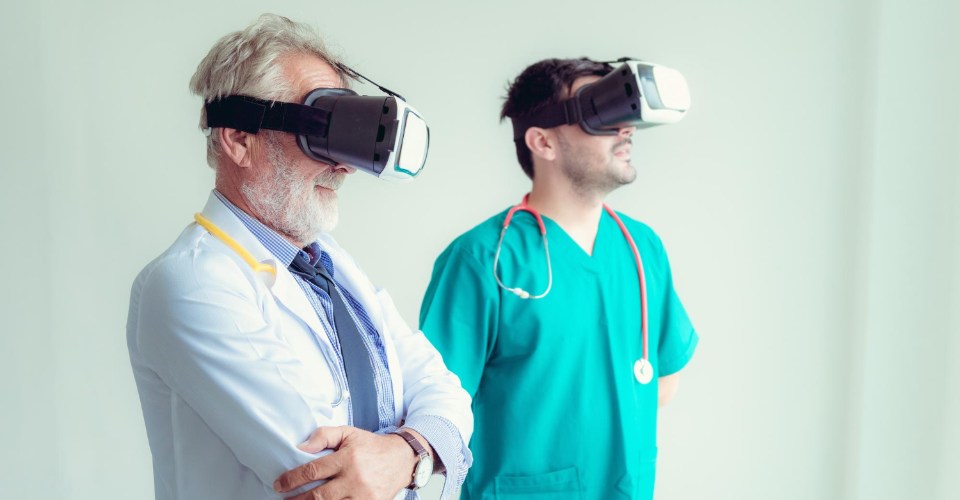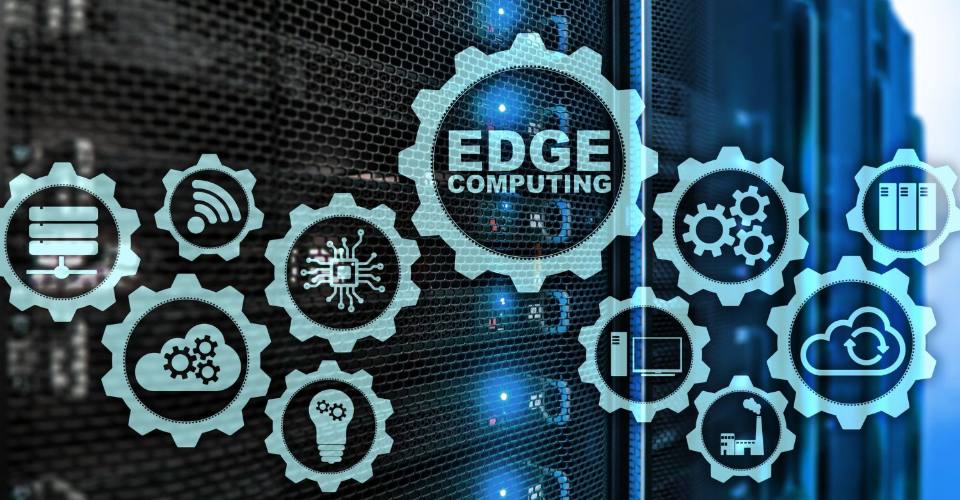In recent years, wearable health technology has taken the healthcare industry by storm. Devices like fitness trackers, medical wearables, and biometric sensors are no longer just gadgets for health-conscious individuals; they are now crucial tools in patient care. As healthcare becomes more personalized and data-driven, wearable technology is paving the way for a new era of proactive health management. By enabling continuous monitoring, real-time data collection, and personalized healthcare solutions, wearable devices are revolutionizing patient care worldwide.
Introduction: A New Era in Healthcare
Imagine a world where doctors could monitor your health in real time, making swift adjustments to your treatment plan based on your unique needs. This world is quickly becoming a reality, thanks to wearable health technology. From fitness trackers that monitor heart rates to advanced medical wearables that track glucose levels, wearable tech is helping us understand our health like never before.
With the global market for wearable health devices expected to reach $69.2 billion by 2028, it’s clear that this technology is more than just a trend—it’s a healthcare revolution.
What is Wearable Health Technology?
Wearable health technology refers to electronic devices that can be worn on the body and monitor various health metrics. These devices collect data on vital signs like heart rate, blood pressure, and glucose levels, providing healthcare professionals with crucial insights into a patient’s health. They come in many forms, including:
- Fitness Trackers: Simple wearables that monitor physical activity and heart rate.
- Medical Wearables: Devices that provide more advanced health monitoring for chronic conditions.
- Biometric Sensors: Sensors embedded in clothing or accessories that track vital health data.
The beauty of wearable technology lies in its ability to offer personalized healthcare. By continuously collecting data, these devices can help identify patterns, detect early signs of disease, and provide proactive care.
The Benefits of Wearable Health Technology
1. Continuous Health Monitoring: A Game-Changer in Healthcare
Wearable health technology is transforming how we approach personal healthcare, especially for those managing chronic conditions. The ability to monitor vital signs in real-time through medical wearables is one of the most significant advancements in modern healthcare. These devices continuously track parameters like heart rate, blood pressure, glucose levels, and oxygen saturation, providing critical data for both patients and healthcare providers.
Key Benefits of Continuous Health Monitoring
- Real-time Data Access: Wearable health devices, equipped with biometric sensors, enable healthcare providers to receive instant updates on a patient’s condition, allowing for swift intervention when necessary.
- Chronic Disease Management: Continuous monitoring is crucial for managing chronic conditions like diabetes, hypertension, and heart disease. By tracking a patient’s health status, wearables can identify potential issues before they escalate, reducing the risk of emergencies.
- Preventive Care: Wearables help in the early detection of health problems, facilitating timely interventions that can prevent complications and costly treatments in the future.
Statistical Insight: The Impact of Continuous Health Monitoring
- A recent study revealed that patients using medical wearables for continuous monitoring saw a 40% reduction in hospital readmissions for chronic conditions like heart failure and diabetes.
- 40% of healthcare systems worldwide are integrating wearable health technology to enhance the quality of patient care and reduce treatment costs, according to a report by MarketsandMarkets.
The Role of Wearable Health Technology in Personalized Healthcare
By continuously monitoring health metrics, wearable gadgets enable healthcare providers to create personalized healthcare plans tailored to individual needs. With real-time data, doctors can adjust treatments more effectively, resulting in better outcomes for patients. This data-driven approach empowers patients to take control of their health, enhancing overall wellness.
With the rise of medical wearables, continuous health monitoring is no longer a luxury but an essential tool in modern healthcare. These technologies not only improve the quality of life for individuals but also help reduce the burden on healthcare systems worldwide.
2. Early Detection of Health Issues with Wearable Health Technology
Wearable health technology has revolutionized how we monitor our health by providing real-time insights into our well-being. With the integration of advanced biometric sensors and medical wearables, these devices can detect subtle changes in a person’s health that might otherwise go unnoticed. By identifying early warning signs, wearable devices can significantly reduce the risk of severe health complications.
How Wearable Health Technology Detects Health Issues Early
Medical wearables, such as smartwatches and fitness trackers, have become increasingly sophisticated, allowing for continuous monitoring of vital signs like heart rate, blood pressure, and sleep patterns. A key example is the electrocardiogram (ECG) monitor found in many wellness gadgets, which can detect irregular heartbeats, such as atrial fibrillation (AFib), a common heart condition that often goes undiagnosed until it results in more serious health problems.
- ECG Monitors: These medical wearables can capture electrical signals from the heart, alerting users to any abnormalities. This early detection allows for timely intervention, potentially preventing heart attacks or strokes.
- Heart Rate Variability: Changes in heart rate can indicate stress, sleep disorders, or even the onset of more serious conditions like arrhythmias. Wearable health technology provides a continuous stream of this data to users and healthcare providers.
The Role of Personalized Healthcare in Early Detection
By utilizing wearable health technology, healthcare providers can tailor their care plans based on continuous health data. Personalized healthcare is enhanced by real-time updates from wearable devices, allowing doctors to make more informed decisions.
- Preventive Healthcare: Regular monitoring helps to identify early signs of potential issues such as hypertension or high cholesterol, which can lead to heart disease if left unchecked.
- Data Sharing: Wearables allow for instant sharing of health data with doctors, providing more accurate and timely diagnoses.
Benefits of Early Detection through Wearable Devices
- Proactive Health Management: Early detection enables swift medical intervention, reducing the need for expensive emergency treatments.
- Reduced Health Risks: Identifying health issues early can prevent escalation, helping patients avoid critical health events such as heart attacks or strokes.
In conclusion, wearable health technology offers a powerful tool in early diagnosis, reducing the risk of serious health complications, and supporting proactive management of health. As wearable devices continue to evolve, their ability to offer personalized, real-time healthcare will transform the future of health monitoring.
3. Personalized Healthcare Plans: Tailoring Care with Wearable Health Technology
In today’s healthcare landscape, Wearable Health Technology is revolutionizing the way we approach personalized care. With advancements in medical wearables and biometric sensors, these devices can collect an abundance of data, from heart rate and blood pressure to sleep patterns and physical activity. This wealth of information enables healthcare providers to develop highly personalized healthcare plans that cater to each patient’s unique needs.
Real-Time Data for Dynamic Adjustments
Wearable devices continuously monitor vital signs, providing real-time data that can be used to make dynamic adjustments to treatment plans. Wellness gadgets, such as fitness trackers and smartwatches, can track everything from calorie expenditure to oxygen levels, offering valuable insights into an individual’s overall health. With this data, doctors can make timely changes to medications, therapies, or lifestyle advice based on the patient’s immediate health status, rather than relying on outdated or incomplete information.
Benefits of Personalized Healthcare Plans
- Improved Outcomes: Personalized care helps patients achieve better health outcomes by addressing their specific needs. Data from wearables allows for a more accurate understanding of a patient’s condition, resulting in more effective treatments.
- Prevention and Early Detection: Continuous health tracking empowers patients and doctors to identify potential health risks early. This allows for preventative measures or early interventions, reducing the risk of serious health issues in the future.
- Enhanced Patient Satisfaction: With personalized healthcare, patients feel more engaged in their treatment plan, knowing that their care is tailored to their individual health profile. This leads to higher satisfaction and better adherence to care recommendations.
Key Statistic:
According to a report by Grand View Research, the global wearable health technology market size is expected to reach $69.2 billion by 2028, driven by increasing demand for personalized healthcare solutions and advancements in biometric sensors.
By integrating wearable health technology into patient care, healthcare providers can deliver more accurate, timely, and personalized care. The ability to make real-time adjustments based on continuous monitoring enhances treatment effectiveness, improves patient engagement, and promotes better health outcomes overall.
4. Increased Access to Healthcare Data
Wearable technology is transforming the way we access and interact with healthcare data. Traditionally, patients had to wait for scheduled appointments or lab tests to understand their health status. However, with the advent of medical wearables and biometric sensors, patients can now continuously monitor their health and share the data instantly with healthcare providers. This seamless exchange of information can lead to quicker decisions, personalized care plans, and ultimately, better health outcomes.
Immediate Data Sharing
One of the most powerful aspects of wearable health devices is the ability to collect and share data in real-time. Devices like wellness gadgets (smartwatches, fitness trackers) equipped with advanced sensors track vital health metrics such as heart rate, sleep patterns, blood pressure, and even glucose levels. This data is automatically sent to the cloud, where healthcare providers can access it at any time. As a result, healthcare professionals can make faster, more informed decisions, leading to more effective care for patients.
Benefits for Chronic Conditions
For patients with chronic diseases such as diabetes, hypertension, or heart disease, the ability to monitor their condition remotely is especially beneficial. Medical wearables offer continuous tracking of critical health data, enabling healthcare providers to adjust treatment plans promptly. For example, a diabetic patient can use a biometric sensor to monitor glucose levels in real-time, while a hypertensive patient can track blood pressure consistently. This proactive approach can prevent complications and minimize the need for costly emergency interventions.
Life-Changing Access to Healthcare
For many individuals, increased access to healthcare data is a game-changer. Personalized healthcare becomes more effective when doctors have continuous access to detailed health information. According to a 2023 study by Grand View Research, the global wearable medical devices market is expected to grow at a compound annual growth rate (CAGR) of 24.8%, reaching $68.9 billion by 2028. This statistic demonstrates the growing recognition of wearables’ role in improving patient care.
By eliminating the delays associated with traditional healthcare models, wearable technology enables real-time insights, empowering patients to take control of their health. This shift not only improves patient outcomes but also reduces the burden on healthcare systems.
5. Chronic Disease Management with Wearable Health Technology
Wearable health technology, including medical wearables and biometric sensors, has become a game-changer in the management of chronic diseases. Devices designed to track key health metrics help patients monitor their conditions in real-time, significantly improving their quality of life. For chronic diseases such as diabetes, hypertension, and heart disease, these wellness gadgets offer continuous monitoring and immediate feedback that can prevent serious complications.
Continuous Monitoring of Key Metrics
Medical wearables equipped with biometric sensors allow for constant monitoring of vital signs like glucose levels and blood pressure. For diabetics, wearable glucose monitors provide near-instant feedback on blood sugar levels, while blood pressure monitors help individuals with hypertension track fluctuations. This continuous data collection ensures that patients remain aware of their health status at all times, enabling timely interventions before conditions worsen.
- Diabetes management: Wearable glucose monitors help diabetics avoid hypoglycemia or hyperglycemia, reducing the risk of complications.
- Blood pressure monitoring: For patients with hypertension, wearable devices can track blood pressure variations, helping avoid strokes and heart attacks.
Reducing Hospital Visits and Emergency Interventions
By providing real-time health data, wearable technology empowers patients to take control of their health, reducing the need for frequent hospital visits. When doctors have access to continuous health data, they can adjust treatments quickly and provide personalized healthcare. This can reduce unnecessary emergency room visits and hospitalizations, resulting in significant cost savings for both healthcare systems and patients.
- Hospital cost reduction: Early detection and management of chronic conditions can reduce emergency treatment costs by up to 30% (Source: National Institute of Health).
- Improved patient outcomes: A study found that patients who used wearables for chronic disease management had 22% fewer hospital admissions (Source: Journal of Medical Internet Research).
Personalized Healthcare Solutions
With data collected from wellness gadgets, healthcare providers can create personalized healthcare plans tailored to the unique needs of each patient. This means more precise treatment plans, better monitoring, and overall improved care. Whether it’s adjusting insulin doses for diabetics or modifying blood pressure medications, wearable devices provide the real-time insights needed to make these decisions.
In summary, the integration of medical wearables into chronic disease management not only improves health outcomes but also enhances patient autonomy, making it a vital tool for a healthier future.
6. Reduced Healthcare Costs
Wearable health technology is playing a crucial role in reducing healthcare costs through remote monitoring and early intervention. By continuously tracking a patient’s vital signs, wearable devices help healthcare providers identify potential health issues before they become severe. This early detection can prevent expensive emergency treatments and hospitalizations, ultimately saving money for both patients and healthcare systems.
- Reduced In-Person Appointments: Medical wearables, like fitness trackers and blood pressure monitors, enable patients to share real-time data with their healthcare providers without needing frequent visits. This reduces the burden on both patients and doctors, saving time and travel costs.
- Prevention of Expensive Treatments: With the ability to monitor chronic conditions such as hypertension or diabetes through wellness gadgets, patients can adjust their lifestyle or medication before complications arise. This can lower the need for urgent care or long-term hospitalization, significantly reducing medical expenses.
- Cost Savings: According to a study by Health Affairs, remote patient monitoring can reduce the number of hospital admissions by 17% and cut hospital readmissions by 25%. These cost-saving benefits make wearable health technology a key tool in the future of personalized healthcare.
7. Enhanced Patient Engagement and Empowerment
Wearable health technology is revolutionizing patient engagement by giving individuals direct control over their health. By using biometric sensors, patients can track key health metrics and actively participate in their wellness journey.
- Real-Time Health Tracking: With devices like smartwatches and fitness trackers, patients can monitor their heart rate, activity levels, and sleep patterns. This real-time feedback motivates them to make healthier lifestyle choices, such as increasing physical activity or improving sleep hygiene.
- Informed Decision-Making: Medical wearables provide data that can be shared instantly with healthcare providers, enabling informed decisions regarding treatments and lifestyle changes. This collaborative approach to care ensures patients are more involved in their health management, fostering a sense of ownership and responsibility.
- Improved Treatment Adherence: Studies show that patients who engage with wearable health technology are more likely to adhere to prescribed care plans. For instance, a survey by Deloitte found that 60% of users of wellness gadgets reported better health outcomes due to increased adherence to treatment and lifestyle changes.
Incorporating wearable devices into healthcare systems boosts patient empowerment, leading to healthier behaviors and ultimately better long-term health outcomes.
Key Takeaways: The Future of Wearable Health Technology
- Wearable health technology is revolutionizing patient care by enabling continuous monitoring, early detection of health issues, and personalized healthcare plans.
- Devices like fitness trackers, medical wearables, and biometric sensors are helping manage chronic diseases and providing healthcare professionals with real-time data to improve decision-making.
- The wearable health technology market is projected to reach $69.2 billion by 2028, indicating rapid growth and widespread adoption.
- Wearable devices reduce healthcare costs by minimizing hospital visits and enabling remote patient monitoring.
At a Glance: Benefits of Wearable Health Technology
| Benefit | Description |
|---|---|
| Real-Time Health Monitoring | Continuous tracking of vital signs like heart rate and glucose levels. |
| Early Detection | Identifying health issues before they escalate. |
| Personalized Healthcare | Tailored treatment plans based on real-time data. |
| Chronic Disease Management | Ongoing monitoring for conditions like diabetes and hypertension. |
| Reduced Healthcare Costs | Fewer in-person visits and early intervention reduce costs. |
FAQs
1. How can wearable devices help in emergencies?
Wearable devices can detect critical health changes, such as heart attacks or falls, and immediately alert healthcare providers or emergency services. Some devices even have built-in GPS to help locate the wearer in case of an emergency.
2. Can wearable devices track chronic diseases?
Yes, wearable devices are ideal for managing chronic diseases like diabetes and hypertension. They can provide continuous monitoring of key health metrics, ensuring patients and healthcare providers have up-to-date information to adjust treatments accordingly.
3. Are wearable health devices secure?
Yes, wearable devices are designed with robust security features to protect sensitive health data. Data is encrypted during transmission, and many devices comply with healthcare regulations to ensure patient privacy.
Conclusion: Embracing the Future of Healthcare
Wearable health technology is not just a passing trend; it is reshaping the future of healthcare. From early disease detection to personalized treatment plans, these devices empower both patients and healthcare providers. As the technology continues to evolve, we can expect even more advanced wearables to play an essential role in improving patient care, reducing healthcare costs, and enhancing overall wellness.
The future of healthcare is in our hands—literally. Wearable health technology is making it easier than ever to take control of our health and well-being. As we move forward, we are only scratching the surface of what these innovations can achieve. With continuous advancements in biometric sensors, artificial intelligence, and data analytics, wearable devices will only become more powerful tools for improving patient outcomes worldwide.



















Leave a Reply